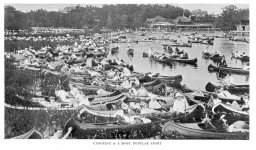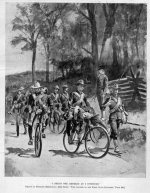This is a presentation given by our member Murat at the 2021 Virtual Assembly of the Wooden Canoe Heritage Association. It is an impressively researched, sequenced and narrated photographic history of canoeing in Toronto from the 1880's. I can do no better than quote Murat's YouTube description:
"Urban Canoeing in Canada’s Largest City; Toronto’s Lost Canoe Heritage: A thriving wooden canoe industry once existed in the city of Toronto. At its peak, thousands of wooden canoes once graced the shoreline and harbor of the city with over a dozen builders, multiple social clubs and many liveries providing watercraft to the masses. This presentation will showcase the old paddling hot-spots of the area, discuss various successful builders and illustrate the urban changes of the region that unfortunately contributed to the end of this once thriving past-time."
"Urban Canoeing in Canada’s Largest City; Toronto’s Lost Canoe Heritage: A thriving wooden canoe industry once existed in the city of Toronto. At its peak, thousands of wooden canoes once graced the shoreline and harbor of the city with over a dozen builders, multiple social clubs and many liveries providing watercraft to the masses. This presentation will showcase the old paddling hot-spots of the area, discuss various successful builders and illustrate the urban changes of the region that unfortunately contributed to the end of this once thriving past-time."


